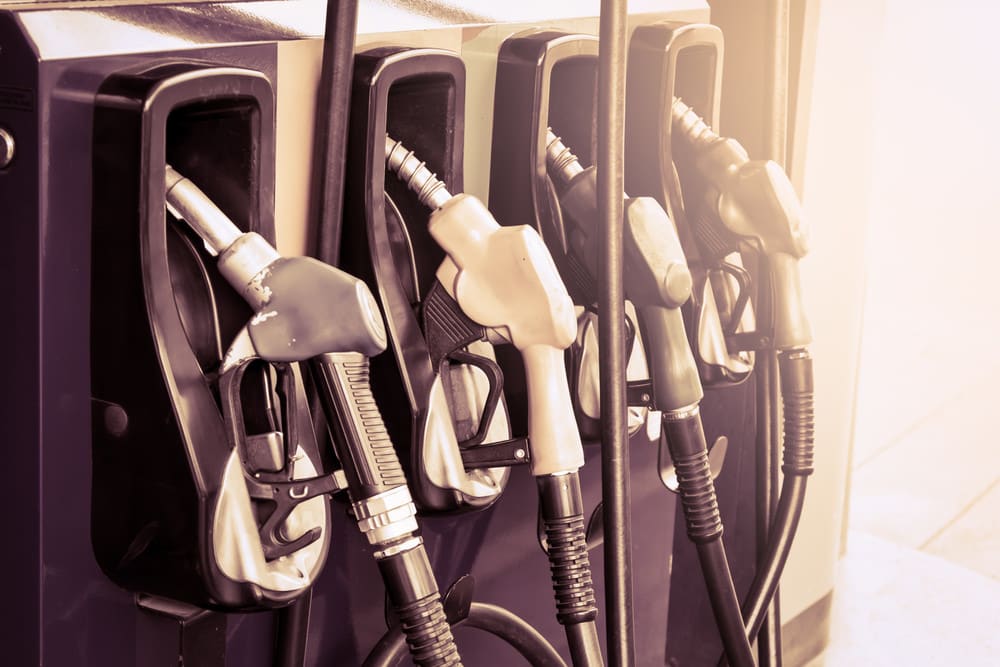

Doing the extra bit of research it takes to save a few bucks here and there is common practice to most of us. On the other hand, when our wallet feels fatter than normal, we tend to spend more freely. But when it comes to the pump, does it make sense to put regular gasoline in a car that should take premium? Does it make sense to put premium gas in a car that only needs regular? The answers might surprise you.
How does the engine use gasoline?
To understand the differences in gasoline, it helps to know exactly how your engine performs when it uses gas. Gasoline helps with combustion, which occurs when the spark plug delivers a small electric current that ignites a certain mixture of air and fuel in the combustion chamber. The energy created from this reaction moves the pistons in the cylinders, which drives the crankshaft, giving your car the power it needs to move.
Combustion is a relatively slow process, and the amount of spark is just enough to ignite the air/fuel mixture near the plug, which gradually expands, igniting the rest. The engine is optimized for this reaction so it can absorb as much energy as possible, and a lot of engines are built differently for different purposes (i.e. a sports car is built for power, while a hybrid car is built for fuel-efficiency), and each operates differently because of it.
Engine optimization in this way is important for a few reasons. The air/fuel mixture the flame front hasn’t reached is changing significantly in pressure and temperature before the reaction. If the conditions of the cylinder contain too much heat or pressure, for the air/fuel mixture, it will ignite spontaneously, resulting in engine knocking, or ‘the knock’. This is also called ‘detonation’, and it creates a pinging sound since combustion is not happening in the timely manner the engine requires for optimum performance. Engine knocking can be completely inconsequential, or have serious effects if it is ignored.
What is gasoline and how is it ranked?
Oil is a hydrocarbon compound that consists of carbon and water as its main components. Gasoline is blended to specific recipes that involve about 200 different hydrocarbons from oil. There are two hydrocarbons used to rank the knock resistance of gasoline: isooctane and n-heptane, the combination of which determines how volatile the fuel is in terms of burning potential. For example, isooctane is resistant to exploding spontaneously, whereas n-heptane is very susceptible to spontaneous explosion. When added together in a certain formula we arrive at the ranking: so if 85% of the recipe is isooctane and 15% is n-heptane, we use 85 (the percentage of isooctane) to determine the ranking, or octane level.
Here’s a list that outlines the normal octane levels for the most common gasoline recipes:
- 85-87 – Regular
- 88-90 – Supreme
- 91-above – Premium
What do the numbers mean?
These numbers basically determine how quick to ignite gasoline is, given the conditions of the engine it will be used in. So premium gasoline doesn’t necessarily provide more energy to an engine than regular gasoline; it allows more aggressive engines (say, turbocharged engines) to take more power from a gallon of gas. This is where fuel grade recommendations for vehicles come in.
Since more forceful engines (Porsche 911 Turbo) create more heat and pressure than less forceful engines (Honda Civic), they require a certain octane level for optimum working efficiency. The tendency for an engine to knock is influenced by the compression ratio, which, in turn, has an effect on the engineering design of the combustion chamber itself. A higher compression ratio extracts more power during the expansion stroke, which directly contributes to high cylinder pressure and temperature. So, if you feed an engine fuel with insufficient octane it has a higher tendency to knock.
What does this mean for drivability?
Car and Driver tested how different types of fuel affected the engine performance of different cars and trucks. In a two-part experiment, they tested a series of vehicles (some that ran of regular and some that ran on premium) with regular gas, drained the tanks, ran them for a few days on premium gas, and then tested again. In the end, any benefit gained in performance from switching to premium was nowhere near significant, and definitely not worth the increase in price. On the other hand, most vehicles (3 of 4) performed worse when not performing with their suggested fuel.
Car engines are built to maintain a certain optimized level of performance, and fuel recommendations are made with this in mind. Immediate engine failure might not be the case, but it could have damaging long-term effects, which could lead to costly repairs.
Have you been putting the wrong fuel in your car? Book a mechanic to perform a thorough inspection as soon as possible.



